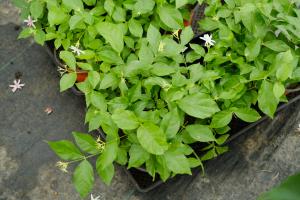Understanding the Process of How Plants Evaporate Water
Plants are unique organisms that play a crucial role in sustaining life on our planet. They are known to absorb water and nutrients from the soil, absorb carbon dioxide from the air, and perform photosynthesis, which allows them to produce food and oxygen. An important aspect of plant physiology that is often overlooked is their ability to evaporate water. This process, known as transpiration, plays a significant role in maintaining the water cycle and regulating the earth's climate.
What is Transpiration?
Transpiration is the process through which plants lose water in the form of water vapor. This water vapor exits the plant through small pores, known as stomata, located on the leaves, stems, and other parts of the plant. The amount of water that is transpired varies depending on several factors, including environmental conditions, plant species, and plant size. In general, transpiration is highest during warm and dry weather conditions.
Why Do Plants Evaporate Water?
Transpiration serves several essential functions in plants. For starters, it helps to regulate the temperature of the plant by cooling it down through the release of water vapor. Transpiration also helps to maintain the water balance of the plant, allowing it to absorb nutrients from the soil and transport them through the plant's tissues. Additionally, transpiration can help to prevent wilting, by keeping the plant's cells turgid and preventing them from collapsing.
Factors that Affect Transpiration
Several factors can have a significant impact on the rate of transpiration in plants. Environmental conditions, such as light, temperature, humidity, wind, and water availability, all play a crucial role in determining how much water is transpired. For example, when the temperature is high and the air is dry, the rate of transpiration is likely to increase. Similarly, plants that receive a lot of sunlight are likely to transpire more than plants that are in the shade.
In addition to environmental factors, plant-specific factors can also influence transpiration. For instance, plants that have more leaves and larger surface areas are likely to transpire more than smaller plants. The number of stomata also plays a crucial role in regulating transpiration. Plants with more stomata are likely to transpire more water and have a greater potential for water uptake.
The Importance of Transpiration in the Water Cycle
Transpiration is an essential component of the water cycle. As plants transpire water vapor into the atmosphere, it increases the humidity and ultimately contributes to cloud formation. When these clouds release precipitation, it can replenish the groundwater, streams, and oceans. In this way, transpiration plays a significant role in regulating the water cycle and ensuring that freshwater is available for human and animal consumption.
The Bottom Line
Transpiration is an important physiological process that allows plants to regulate their internal temperature, maintain their water balance, and prevent wilting. This process is largely dependent on environmental conditions and plant-specific factors, which can impact how much water is transpired. Moreover, transpiration plays a vital role in the earth's water cycle, ensuring that freshwater is available for all living organisms. By understanding the process of how plants evaporate water, we can appreciate the essential role that plants play in maintaining the balance of our planet's ecosystems.

 how many times do yo...
how many times do yo... how many planted tre...
how many planted tre... how many pine trees ...
how many pine trees ... how many pecan trees...
how many pecan trees... how many plants comp...
how many plants comp... how many plants can ...
how many plants can ... how many plants and ...
how many plants and ... how many pepper plan...
how many pepper plan...





























